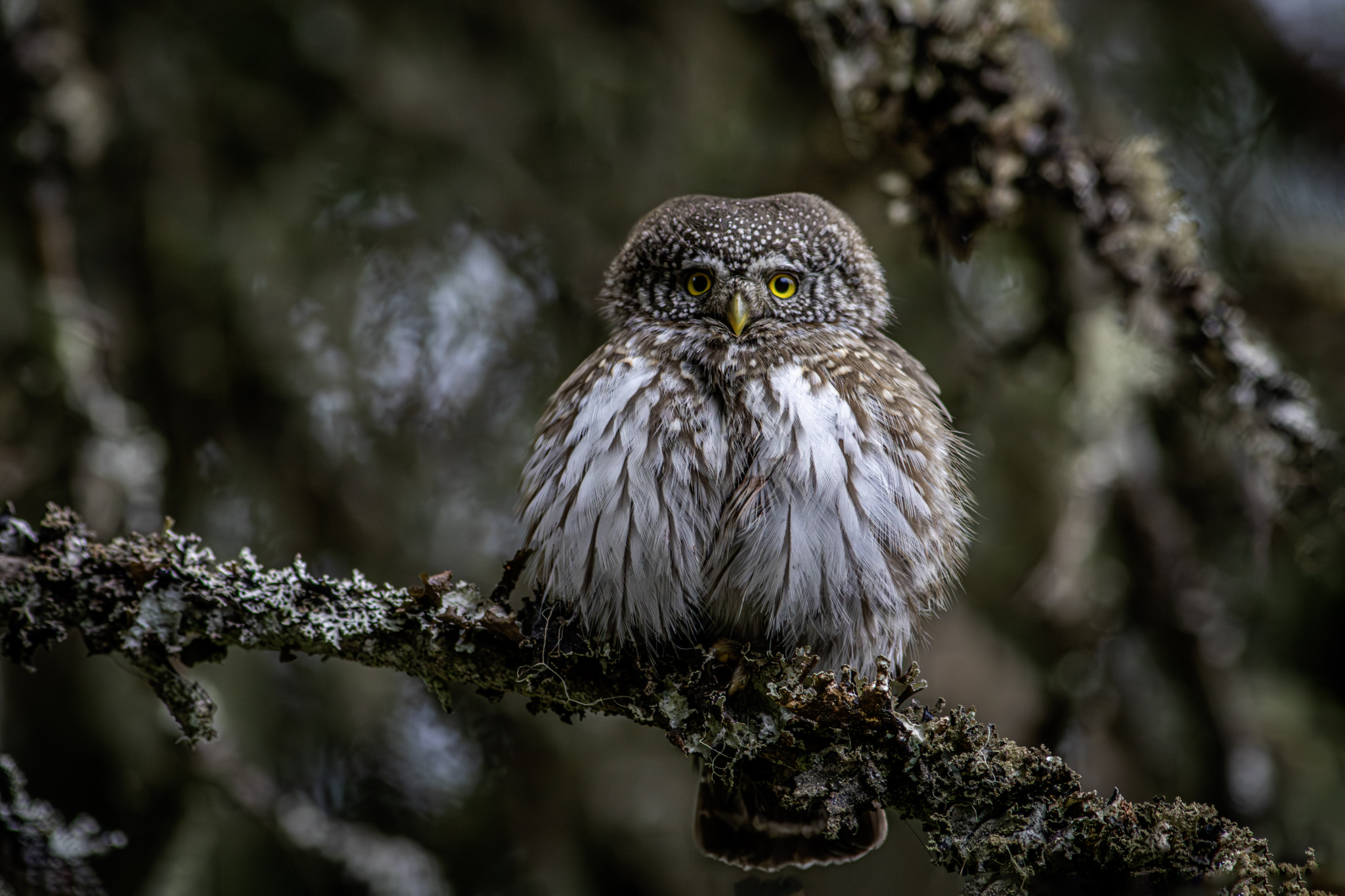The Eurasian Pygmy Owl is Europe’s smallest owl, known for its bold personality, daytime hunting, and sharp vision. Despite its small size, it is a fierce predator, often taking prey as large as itself!
Physical Characteristics
- Size:
- Length: 15–19 cm (5.9–7.5 inches)
- Wingspan: 32–39 cm (12.5–15.3 inches)
- Weight:
- Males: 50–65 g (1.8–2.3 oz)
- Females: 65–80 g (2.3–2.8 oz)
- Appearance:
- Round head, no ear tufts.
- Large yellow eyes and hooked beak.
- Brownish-grey plumage with white spots on the back.
- White belly with brown streaks.
- Fake “eyes” (dark spots) on the back of its head to confuse predators.
Habitat & Distribution
- Found in northern and central Europe, Russia, and parts of Asia.
- Prefers coniferous forests, especially spruce and pine woodlands.
- Often lives in mountainous regions or boreal forests.
Diet & Hunting Behavior
- Primary diet:
- Small mammals (mice, voles, and shrews).
- Small birds (finches, tits, warblers).
- Occasionally insects and reptiles.
- Hunting technique:
- Hunts at dawn and dusk, but is also active during the day.
- Perches on tree branches, scanning for prey.
- Ambushes prey by swooping down quickly.
- Caches extra food in tree holes for later consumption.
Behavior & Social Structure
- Solitary except during breeding season.
- Highly territorial, defends its hunting grounds aggressively.
- Often perches in high trees, scanning the forest for prey.
- Not afraid of larger birds – it can chase away birds bigger than itself!
Vocalizations
- The male’s call is a high-pitched, whistling “piu-piu-piu” sound, repeated in a rhythmic pattern.
- Males use calls to attract mates and defend territory.
Reproduction & Lifecycle
- Breeding season: March to June.
- Nesting:
- Uses tree cavities (often old woodpecker holes).
- Does not build its own nest.
- Clutch size: 4–7 eggs, incubated for 28–29 days by the female.
- Chicks fledge after 30–35 days but remain dependent on parents for a few weeks.
- Lifespan: Up to 7 years in the wild, longer in captivity.
Conservation Status & Threats
- Status: Least Concern (IUCN).
- Main threats:
- Deforestation reduces nesting sites.
- Climate change affecting prey populations.
- Predation by larger raptors.
Conservation Efforts
- Protected in several European countries.
- Nest boxes help provide artificial nesting sites.
Interesting Facts
- Small but mighty – often hunts birds its own size.
- Fake “eyes” on its back help deter predators.
- Daytime hunter, unlike most owls.
- Stores extra food in tree holes to survive harsh winters.
Summary
The Eurasian Pygmy Owl (Glaucidium passerinum) is a tiny but fierce owl, found in European and Asian forests. Despite its small size, it is a skilled hunter and a fearless defender of its territory. Though not endangered, conservation efforts focus on preserving forests and providing nesting sites to ensure stable populations.
Visited 28 times, 1 visit(s) today
Views: 350
Subscribe to the newsletter:
